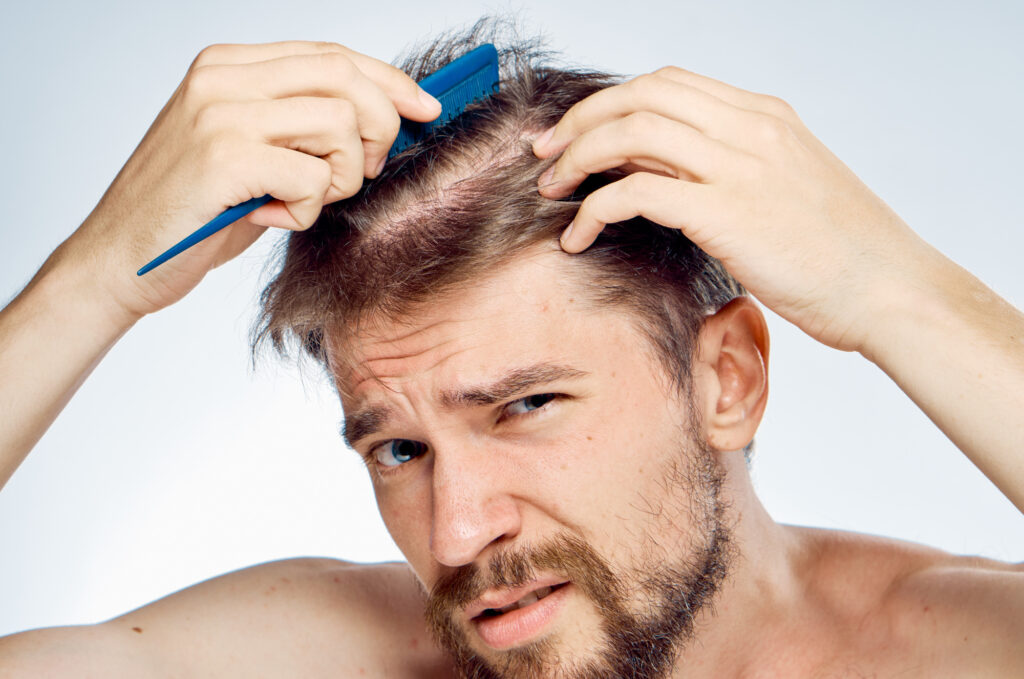
When considering a hair transplants, one of the most pressing questions is whether the results will last. For both transgender and cisgender individuals, the desire for a permanent solution to hair loss is a common concern. Hair transplants are often marketed as a lifelong fix, but the reality can be more complex. In this blog post, we’ll explore whether hair transplants work permanently, considering various methods and factors that influence longevity.
İçindekiler
1. Understanding Hair Transplants Basics
Hair transplants involve relocating hair follicles from a donor area (typically the back or sides of the head) to a balding or thinning area. The expectation is that the transplanted hair will continue to grow like it did in its original location, providing a lasting solution to hair loss.
- Follicular Unit Extraction (FUE): Individual hair follicles are extracted and implanted. Known for minimal scarring and a quicker recovery time.
- Follicular Unit Transplantation (FUT): A strip of scalp is removed from the donor area, and individual follicles are transplanted. This method can yield more grafts in a single session.
- Direct Hair Implantation (DHI): A variation of FUE that uses a specialized tool for simultaneous extraction and implantation, allowing for more precision.
- Robotic Hair Transplantation: Utilizes advanced technology to assist in the extraction and implantation process, potentially increasing accuracy and efficiency.
2. Are the Results Permanent?
The transplanted hair is generally expected to be permanent because the follicles used are resistant to the hormone dihydrotestosterone (DHT), which is responsible for hair loss. However, several factors can affect the longevity of the results.
- Donor Hair Quality: The quality and health of the donor hair play a crucial role in the success and permanence of the transplant. Strong, healthy follicles are more likely to produce long-lasting results.
- Transplant Area: While the transplanted hair itself may be permanent, the surrounding natural hair may continue to thin over time, potentially requiring additional procedures to maintain a balanced look.
- Patient’s Age: Younger patients might experience further hair loss in untreated areas, making future treatments necessary.
3. Factors Influencing Longevity
While the goal is to achieve permanent results, several factors can influence the longevity of a hair transplant. These factors need to be carefully considered during the consultation and planning phase.
- Surgeon’s Expertise: The skill and experience of the surgeon performing the transplant are critical. Poor technique can lead to unsuccessful grafts, affecting the overall durability of the results.
- Post-Operative Care: Proper aftercare is essential for the long-term success of a hair transplant. Failure to follow post-operative instructions can lead to complications, including graft failure.
- Health Conditions: Underlying health conditions, such as hormonal imbalances or autoimmune diseases, can impact the longevity of the transplant.
- Lifestyle Factors: Smoking, poor diet, and stress can negatively affect hair growth and the overall success of the transplant. Maintaining a healthy lifestyle is key to preserving the results.
4. The Role of Maintenance
While transplanted hair can be permanent, it’s important to understand that maintenance may still be required. This is especially true for individuals who continue to experience hair loss in untreated areas.
- Medications: Post-transplant, some patients may need to continue using medications like minoxidil or finasteride to prevent further hair loss.
- PRP Therapy: Platelet-Rich Plasma (PRP) therapy can be used to strengthen transplanted hair and promote the growth of natural hair in thinning areas.
- Follow-Up Transplants: In cases where hair loss progresses, additional transplants may be necessary to maintain the desired density and appearance.
5. Potential Challenges
While hair transplants can provide lasting results, they are not without potential challenges. Understanding these can help set realistic expectations and guide you in making an informed decision.
- Shock Loss: Temporary hair loss in the transplanted or surrounding area can occur post-surgery. While often temporary, it can be distressing for patients.
- Scarring: Depending on the method used, scarring may occur in both the donor and recipient areas, potentially affecting the appearance of the final results.
- Variable Growth Rates: Not all transplanted hair may grow at the same rate or density, leading to a less uniform appearance.
6. Transgender Considerations
For transgender individuals, hair transplants can play a critical role in aligning one’s appearance with their gender identity. However, the unique challenges faced during gender transition, such as hormonal changes, need to be factored into the planning and execution of the procedure.
- Hormone Therapy: Hormone Replacement Therapy (HRT) can affect hair growth patterns, making it essential to coordinate the timing of hair transplants with your overall transition plan.
- Facial Hair Transplants: For transgender women, hair transplants may also involve facial hair removal or the creation of a more feminine hairline, adding another layer of complexity to the procedure.
Achieving Long-Term Success
While hair transplants have the potential to offer permanent results, the success and longevity of the procedure depend on various factors, including the chosen method, surgeon’s expertise, and post-operative care.


